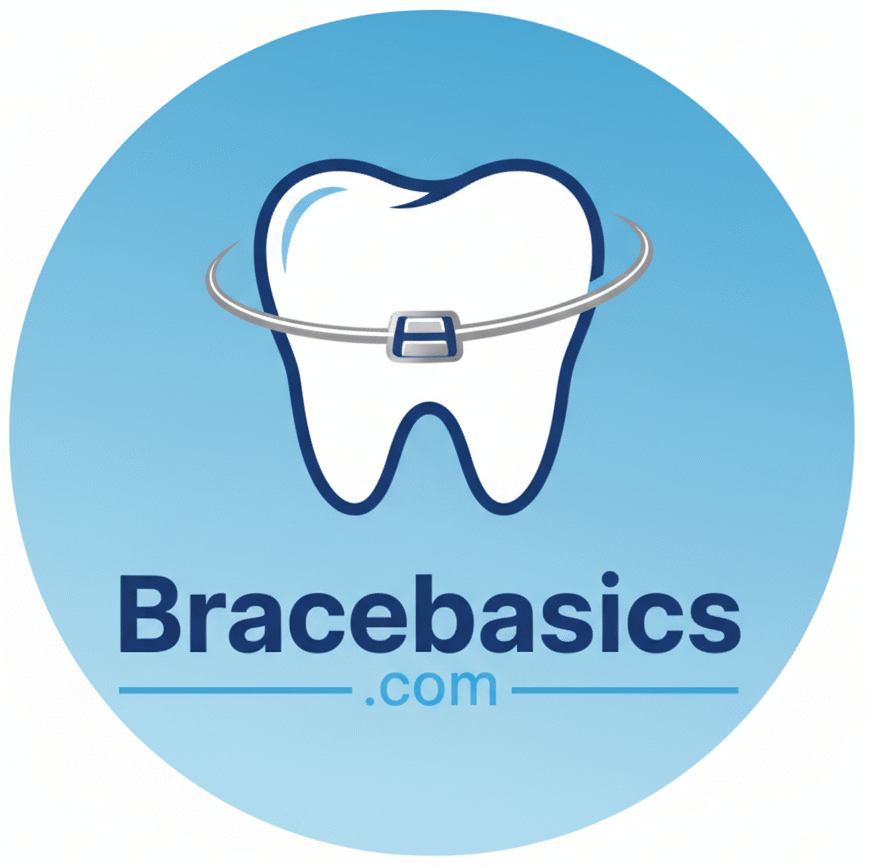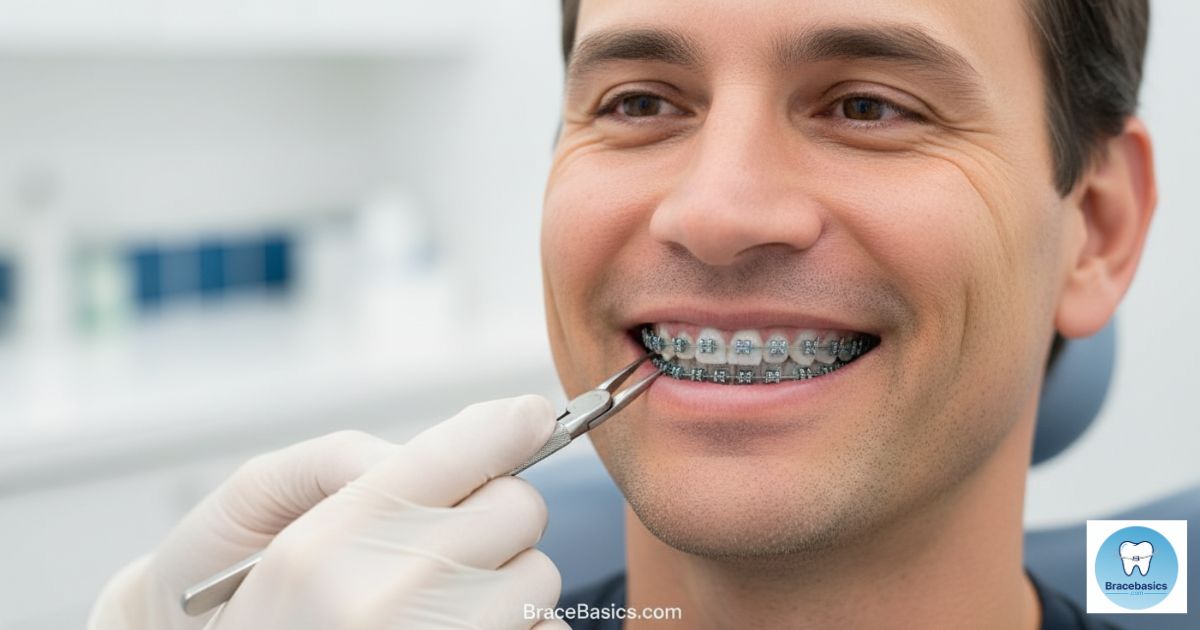Getting a straight smile doesn’t always mean starting from scratch. Many adults already have dental crowns, bridges, or fillings before seeking orthodontic treatment. The big question most ask is — can you get braces with a crown? The short answer is yes. Modern orthodontic treatment with crowns is common, safe, and effective when handled by an experienced orthodontist.
Understanding Braces With Crowns
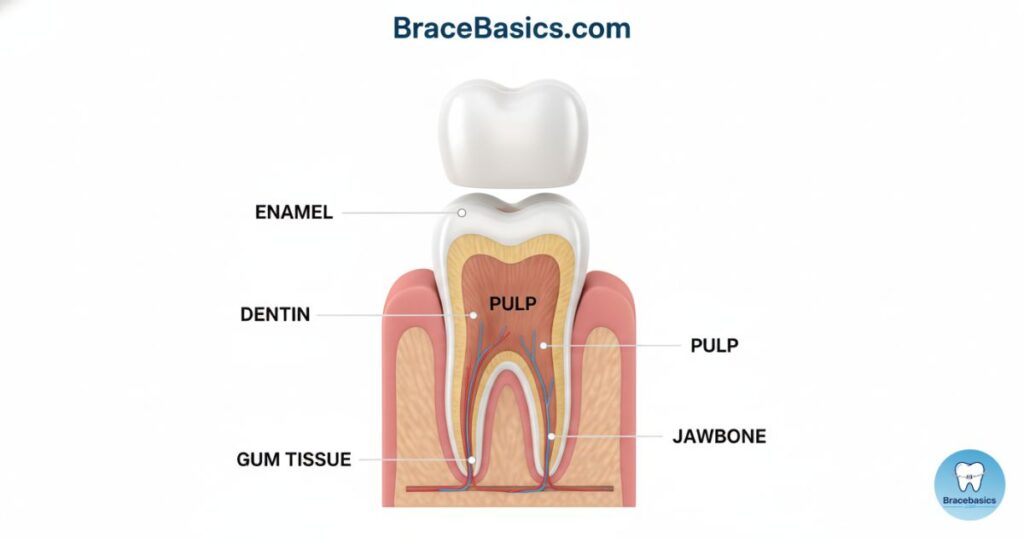
People often wonder do braces work if you have crowns or can braces go on capped teeth? Yes, they can. A dental crown acts like a protective cap for a damaged tooth. Orthodontists use special orthodontic adhesives for porcelain teeth or ceramic teeth to safely bond brackets. These adhesives ensure no harm to your crowns and fillings during treatment.
In most cases, orthodontists apply modified bonding techniques to ensure a strong grip on your crowned teeth. Whether you have metal braces on crowns or Invisalign with crowns, both options work when properly planned. The process may require mild surface preparation to improve adhesion without harming your restoration.
Can You Get Braces with Crowns Or Bridges?
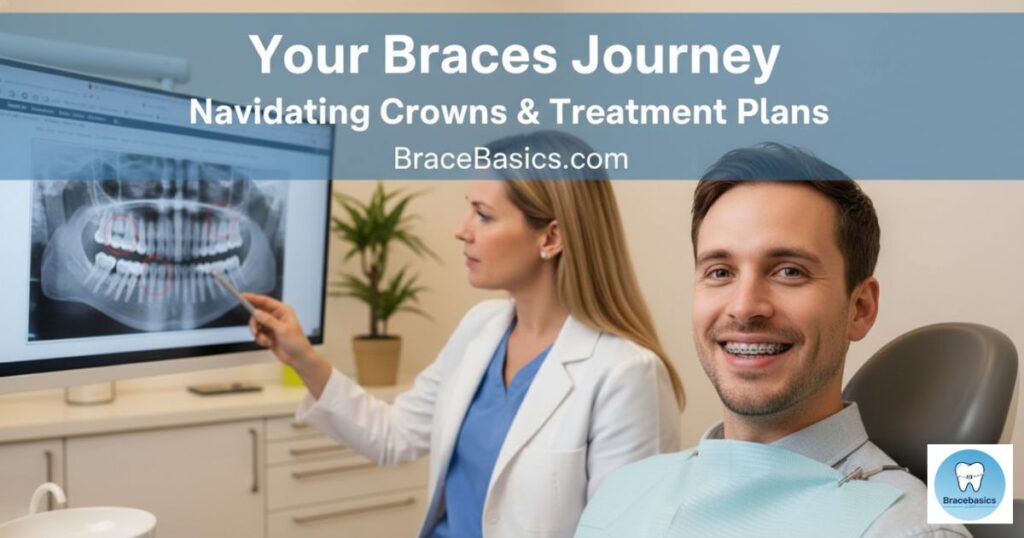
Yes, you can wear braces with dental bridge or braces and crowns at the same time. However, bridges differ slightly because they connect multiple teeth. While braces can move teeth individually, fixed bridges limit movement on certain areas. Skilled orthodontists know how to manage fixed dental bridge and tooth movement using gentle pressure.
Sometimes, minor dental bridge adjustment for braces is necessary to create space or achieve better alignment. A full pre-orthodontic dental evaluation helps assess your existing restorations, ensuring a customized and safe treatment plan. With careful planning, your braces and bridge teeth can work together for a balanced bite.
How Orthodontists Attach Braces To Crowns
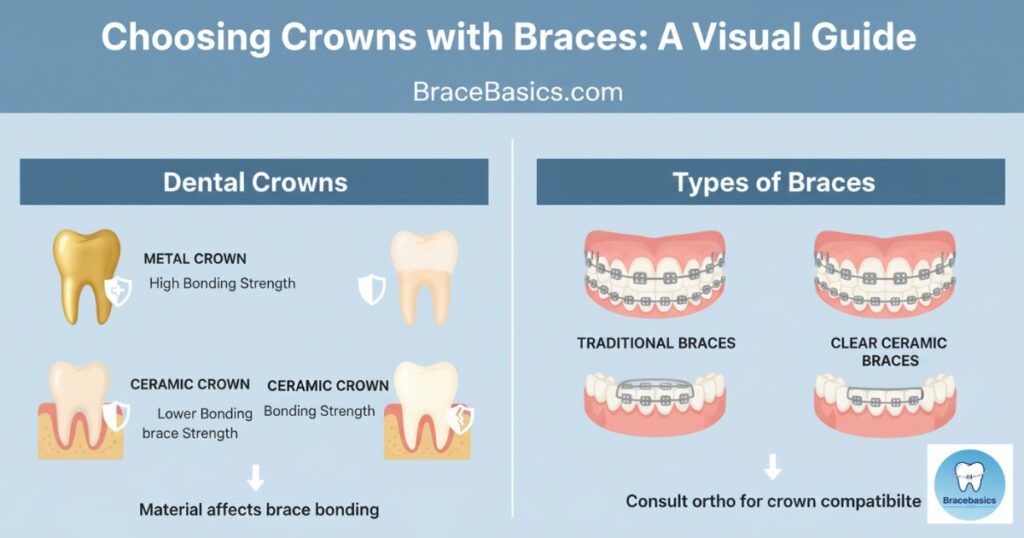
So, how do orthodontists attach braces to crowns without damaging them? They use unique orthodontic adhesives for porcelain teeth and non-etch bonding systems. Instead of roughening the crown’s surface, they rely on a bonding agent designed for smooth materials like ceramic or metal. This prevents crown damage and still allows a secure bond.
Bracket bonding techniques for crowns vary by crown type—porcelain, zirconia, or metal. In some cases, the orthodontist uses a metal or composite attachment pad to improve stability. These modern methods allow effective orthodontics with crowns or bridges, ensuring durability and safety throughout treatment.
Invisalign And Clear Aligners For Crowns
If you’re worried about traditional braces, clear aligners for crowns and bridges offer an excellent alternative. Invisalign with crowns is safe, comfortable, and highly aesthetic. Since aligners don’t rely on bonding brackets, there’s no risk to your restorations. They gently shift your teeth using pressure rather than attachments on every tooth.
However, some crowns or bridges may require customized attachments for alignment accuracy. Orthodontists can design aligners that accommodate your pre-existing dental restorations. This makes Invisalign better for crowns in many adult cases, especially for mild to moderate misalignment or cosmetic alignment solutions.
Crowns Before Braces Or After Braces
A common dilemma is crowns before braces or after braces? Ideally, orthodontists recommend completing orthodontic treatment with dental restorations after braces. This approach prevents any unwanted movement or damage to new crowns. However, if your tooth requires urgent protection, a temporary crown can be placed before braces.
When orthodontic movement is done, your dentist can replace the temporary crowns during braces with final ones. This timing ensures a perfect fit and bite correction. Some patients also need post-braces crown replacement to match their new alignment or smile design for the best results.
Risks And Considerations Of Braces With Crowns
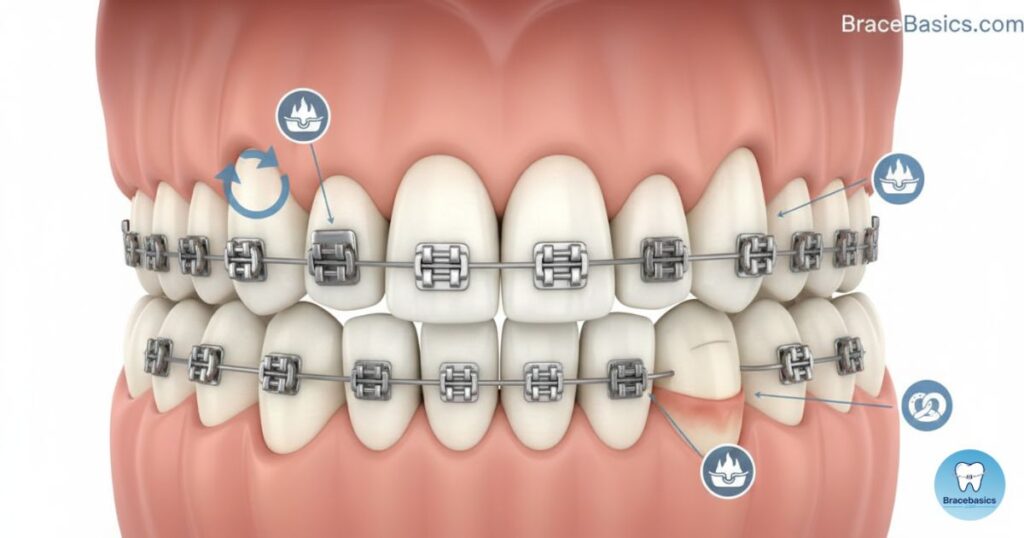
While safe, there are risks like minor crown loosening, sensitivity, or bonding failure. Can braces damage crowns? Not when done correctly. Still, patients should be careful with hard foods to avoid accidental damage. Can braces loosen a dental crown? It’s rare but possible if adhesive fails or pressure is excessive.
The key lies in personalized orthodontic planning for restorations. Your orthodontist evaluates your bite, crown materials, and bridge designs to ensure controlled tooth movement. This avoids complications like tooth movement limitations with bridges or adhesive wear. Proper care ensures both crowns and braces last through treatment.
Managing Fixed Bridges During Orthodontic Treatment
Managing fixed bridges during orthodontics requires strategy. Since bridges hold teeth together, orthodontists focus on moving neighboring teeth or adjusting the bite around them. Sometimes, hybrid orthodontic treatment combines partial braces with aligners to work efficiently without disturbing bridges.
In cases where bridge movement is necessary, replacing dental bridge after braces may be planned. This ensures that new bridges match your corrected tooth alignment and bite position. Such combined restorative dental work and braces achieve both functionality and aesthetics in adult orthodontics.
Types Of Braces For Adults With Crowns
Adults with crowns can choose from several orthodontic options. Traditional metal braces on crowns are strong and reliable, but ceramic braces or clear aligners look more natural. Fixed vs removable orthodontic options depend on your lifestyle and the complexity of alignment.
A brief comparison helps:
| Type | Suitable For | Key Benefit |
|---|---|---|
| Metal Braces | Strong tooth movement | Reliable for all cases |
| Ceramic Braces | Crowns or veneers | Blend with teeth color |
| Invisalign / Clear Aligners | Minor to moderate corrections | Gentle, removable, aesthetic |
Choosing the best type depends on your treatment goals, comfort, and dental restoration compatibility.
Protecting Crowns During Orthodontic Treatment
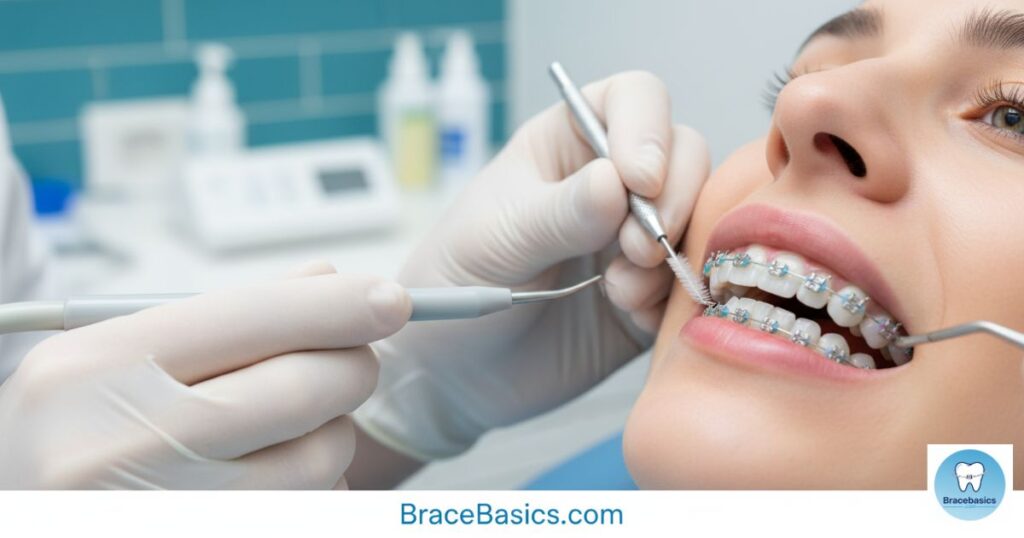
So, how to protect crowns during orthodontic treatment? Use a soft-bristle brush, avoid sticky or hard foods, and visit your orthodontist regularly. Special wax can cover brackets placed on crowns to prevent irritation. These simple habits reduce risks like can braces ruin crowns or veneers or can braces damage crowns.
Patients often ask, is it safe to get braces with dental crowns? Absolutely, when monitored carefully. Orthodontists use gentle force and monitor crown stability throughout your journey. This ensures your restorative dentistry and orthodontics work in harmony.
Cost Of Braces With Crowns
Wondering how much does it cost to get braces with crowns? The average cost in the U.S. ranges between $5,000 to $7,500 for full treatment. Complex cases involving braces with dental bridge or Invisalign with crowns may cost slightly more due to additional customization and materials.
However, many clinics offer flexible payment options. Investing in adult orthodontic options improves your oral health, confidence, and overall bite function. Always ask your orthodontist for a transparent estimate including all follow-up or restoration adjustments after braces.
Orthodontic Evaluation And Planning
Every successful treatment starts with a detailed orthodontic evaluation for crowns. The orthodontist checks crown margins, bridge attachments, gum health, and bite alignment. This allows creating a safe orthodontic treatment sequencing that respects your restorations while achieving straight teeth.
If required, digital scans and X-rays assess tooth alignment after restorative work. Such pre-planning ensures you won’t face unexpected issues during tooth movement or bite correction with crowns. It also helps decide whether to do crowns before braces or after braces for the best cosmetic outcome.
Restorative Dentistry And Orthodontics Together
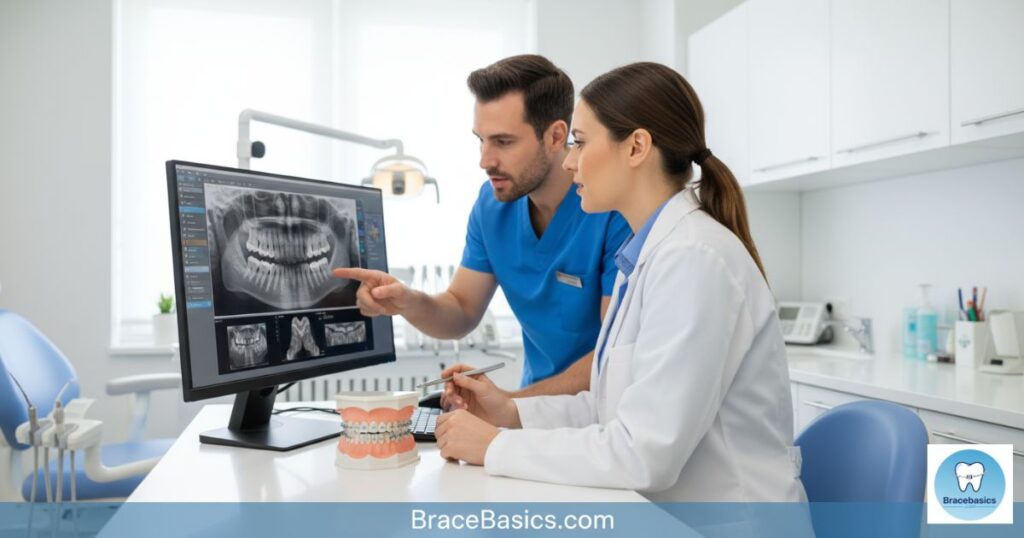
Modern dentistry embraces combining restorative dentistry and orthodontics for complete smile transformations. Many adults choose this dual approach to fix misalignment while maintaining their crowns, bridges, or fillings. Dentists coordinate both treatments to balance aesthetics and function.
This integrated method is ideal for those seeking a smile makeover with crowns and braces. It aligns your teeth, enhances your bite, and rejuvenates your smile — all without replacing healthy restorations. That’s the beauty of today’s cosmetic dentistry after braces.
Case Study: Adult Braces With Crowns
Consider a 42-year-old patient with four porcelain crowns and a dental bridge on the upper jaw. The patient asked, can you have braces with porcelain crowns? After an orthodontic evaluation, the orthodontist used clear aligners for crowns and bridges to move natural teeth gently without stressing the bridge.
After 14 months, the patient achieved a perfect alignment and replaced one bridge post-treatment for aesthetics. This case proves that even with pre-existing dental restorations, achieving straight teeth with crowns is possible when done under expert supervision.
Final Thoughts Can You Get Braces With a Crown?
Absolutely yes. With today’s advanced orthodontic adhesives for porcelain teeth, hybrid orthodontic treatment, and precise orthodontic planning for restorations, adults can enjoy safe, effective results. Your crowns, bridges, or fillings don’t stop you from having a beautiful smile.
Trust your orthodontist’s advice and stay consistent with care. A well-planned orthodontic treatment with crowns can enhance your bite, protect your restorations, and give you lasting confidence. In the end, your journey to perfect alignment is just as achievable — even with crowns.
FAQs About Getting Braces with a Crown
1. What disqualifies you from getting braces?
Severe gum disease, weak jawbone, or poor oral hygiene can temporarily disqualify you from getting braces. Your dentist will first treat these issues before starting orthodontic care.
👉 Learn how to know if you need braces.
2. How long after a crown can I get braces?
You can usually get braces 2–4 weeks after a crown placement. Your dentist ensures the crown is fully bonded and stable before applying brackets or aligners.
3. Should you get braces or crown first?
It’s best to get braces first if your teeth are misaligned. Orthodontic treatment moves your teeth into ideal positions, making it easier to fit crowns properly later.
4. Can I straighten my teeth if I have a crown?
Yes, absolutely! Modern orthodontic methods safely move crowned teeth. Your orthodontist may use special adhesive or custom brackets to protect the crown during treatment.
👉 Read about different types of braces you can choose.
5. Can I eat normally with braces and crowns?
You’ll need to avoid sticky or hard foods that can loosen brackets or damage crowns. Check our guide on foods you can not eat with braces for a full list.
6. How do I clean my teeth with braces and crowns?
Use a soft brush, floss threader, and rinse daily to remove trapped food and plaque. Learn step-by-step tips in how to brush teeth with braces.
7. What color braces look best with crowns?
Neutral or clear shades blend beautifully with dental crowns. Get color inspiration from what color braces should I get.
Sources:
- American Association of Orthodontists
- Colgate Oral Health Center
- Mayo Clinic – Orthodontic Care
- WebMD Dental Health
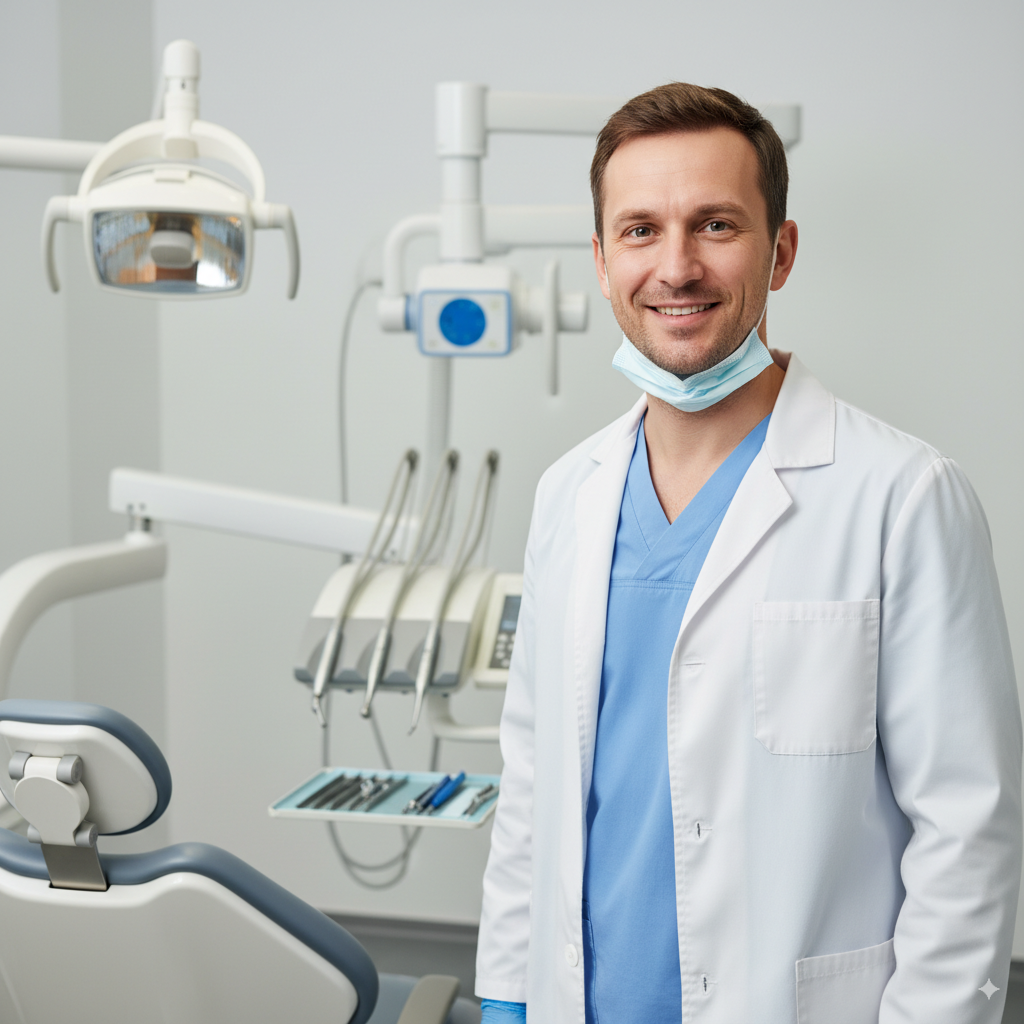
Hi, I’m Dr. Martin, the founder of BracsBasics.com. With years of experience in orthodontics, I’ve made it my mission to simplify braces care for patients of all ages. Here, you’ll find easy-to-understand advice, practical tips, and reliable resources to make your braces journey smoother, healthier, and stress-free. My goal is to help you smile with confidence every step of the way.
